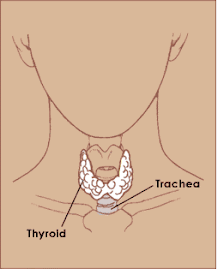
The Bairns dale ulcer is a skin disease caused by the bacterium
Mycobacterium ulcerans. The toxins made by the bacteria destroy skin cells, small blood vessels (capillaries) and subcutaneous fat, which leads to ulceration and skin loss. These bacteria are found naturally in the environment, but the mode of infection to humans is unknown. Native and domestic animals can also be at risk.
The Bairns dale ulcer is not thought to be contagious. It gets its name from the local area in which an outbreak among farmers was documented in 1948. Since this type of ulcer is found in other parts of Australia and around the world, it has many names including Daintree ulcer and Buruli ulcer. Its medical name is Mycobacterium ulcerans (MU) infection. MU is a rare infection, although the number of cases in Victoria varies widely from year to year.
Symptoms
The progression of symptoms can include:
- A spot that looks like a mosquito bite forms on the skin.
- The spot grows bigger over days or weeks.
- The spot may form a crusty, non-healing scab.
- The scab then disintegrates into an ulcer.
- The ulcer continues to enlarge.
- Unlike other ulcers, this ulcer is usually painless and there is generally no fever or other signs of infection.
- The limbs are more commonly affected.
- The infection may sometimes present as localised pain and swelling with fever but no ulceration.
The effect of toxins
Myobacterium ulcerans is related to the same family of bacteria responsible for leprosy and tuberculosis but, unlike them, is not contagious. The toxins made by the bacteria destroy the skin and the fat layer beneath it, and block the small blood vessels that service the infected areas.
These toxins are also thought to have a dampening effect on the person’s immune system, which means the body has less chance of fighting the infection. In severe cases, the infection can destroy bone and cause lifelong deformity and disability. In developing countries, common complications for people who are unable to get adequate medical care can include amputation and the loss of affected organs, such as the eyes.
Locations of recent outbreaks
Myobacterium ulcerans infection has been reported in at least 32 countries around the world. Affected areas include rural West Africa, Central Africa, New Guinea, Latin America and tropical regions of Asia.
In Australia, MU most commonly occurs in localised coastal areas of Victoria, where cases have been reported from East Gippsland, the Mornington Peninsula area, Western Port and Phillip Island, and the Bellarine Peninsula. Most recently there has been a large outbreak associated with the small township of Point Lonsdale. It also occurs less commonly in the Daintree region of Far North Queensland.
Diagnosis methods
Bairnsdale ulcer is diagnosed using a number of tests including:
- Medical history – to identify a slowly enlarging, painless ulcer
- Physical examination – the ulcer is not tender
- Swabs taken from the ulcer, which are then tested in a laboratory
- Biopsy of the ulcer.
Treatment options
Since the ulcer gets bigger with time, early diagnosis and prompt treatment can keep the amount of skin loss to a minimum. The first line of treatment is generally surgery to cut away the dead skin. A surrounding portion of healthy tissue is also cut out to make sure the infection is completely removed. Depending on the extent of surgery, skin grafts may be needed to close the wound.
Sometimes the ulceration can return after surgery, which means another operation is required. More recently there has been a trend to combine surgery with the use of oral and/or intravenous antibiotics. Heat therapy regularly applied to the graft area can help prevent relapses – it seems that, while the bacteria thrive at skin temperature, they can’t survive above 39 degrees Celsius.
Prevention strategies
The cause of infection in humans is not known. As the bacterium is environmental (requires particular conditions outside the body to exist), it makes sense to protect yourself from potential sources of infection such as soil and insect bites. A recent study on mosquitoes trapped in the Point Lonsdale area has shown them to be contaminated with the same bacteria that causes Bairnsdale ulcer.
It is important to remember that the risk of infection is very low, even in those areas where the ulcer is endemic (constantly present in the community). Suggestions to reduce the risk of infection while working outdoors or gardening include:
- Protect cuts or abrasions with sticking plasters.
- Promptly wash and cover any scratches or cuts you receive while working outdoors.
- Wear gardening gloves, long-sleeved shirts and trousers.
- Avoid insect bites by using suitable insect repellents.
- See your doctor if you have a slow-healing skin lesion.










